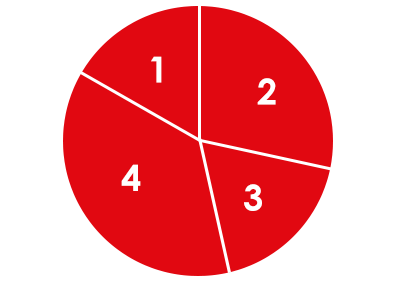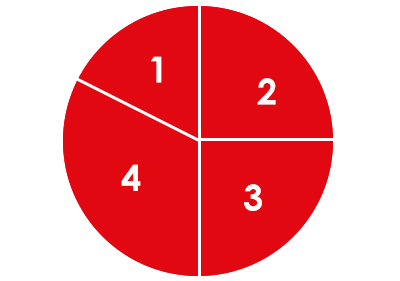The Sinner’s Circle is the concept used widely for pretty much everything that needs to be cleaned! There are four key factors that interact to enable a quality clean:
- Temperature
- Time
- Chemistry
- Mechanical action
How do these factors interrelate?
The four factors all affect each other, and it is called a circle as it remains closed. If one or more factors are increased, one or more of the other factors will decrease to compensate. We use it without thinking in everyday cleaning tasks, for example by adding more ‘elbow grease’, or increasing temperature, or adding soap, or leaving things to soak.

How does it apply to laundry and dishwashing?
Sinner’s circle was formulated by Dr Herbert Sinner in 1959. He worked for the German company who made Persil, and it was initially used for washing clothes.

An example for laundry is a typical woollens cycle in a washing machine. The mechanical action and temperature are reduced to avoid damaging the delicate fibres. The cycle time is increased to compensate the reduction in temperature, and the chemical action is increased to compensate the reduction in mechanical action.
1 – Temperature
2 – Chemistry
3 – Mechanical
4 – Time

An example for dishwashers can be where certain glassware may not tolerate high temperatures. A lower level of mechanical action and temperature can be offset by more aggressive detergents (chemistry) and longer programme cycles (time).
1 – Temperature
2 – Chemistry
3 – Mechanical
4 – Time

What effect do the various factors have?
Temperature
Temperature not only accelerates the activation of the ingredients of detergents (and rinse aid in a dishwasher) but also speeds up the removal of dirt from the load, for example grease. However care needs to be taken as some fibres and materials cannot tolerate high temperatures and the factors have to be increased to compensate.
Time
The longer the cycle time, the better the cleaning performance – prolonged washing and interim soak phases have a positive effect on results. If, on the other hand, the goal is to achieve the shortest possible cycle time, the other factors must compensate accordingly.
Chemistry
Chemicals (detergent) have the purpose of removing and suspending dirt, preventing it from re-depositing onto the fabric or crockery. The important thing about chemicals is the right dosage, the concentration and the quality of the products used. Targeted ingredients ensure perfect cleaning and hygienic performance on particular types of dirt (fats, protein, stains) – the chemical composition of a detergent can at the same time be mild or aggressive.
Mechanical Action
Mechanical action loosens the dirt from the fibre or surface. When washing up at the sink, brushing and scrubbing represents the mechanical action; in a dishwasher, the circulation of water via the pump and the spray arms serves the same purpose. For laundry, the washing machine rotating is the mechanical action.
What is the significance of water?
Water is a medium to transport the other factors. It is needed to dissolve chemicals, transfer heat to the load and also plays an important role in applying mechanical force. In the process, the properties of water have an impact on results.
Summary
Washing machines and dishwashers have standard programmes built in to suit the common fabric and material types. In achieving good cleaning results combined with the efficient use of resources, it is critical that the correct programmes are used as well as the best possible chemicals. The perfect interplay of the four factors which make up the Sinner’s Circle guarantee trouble-free processes in the laundry and in the kitchen!

